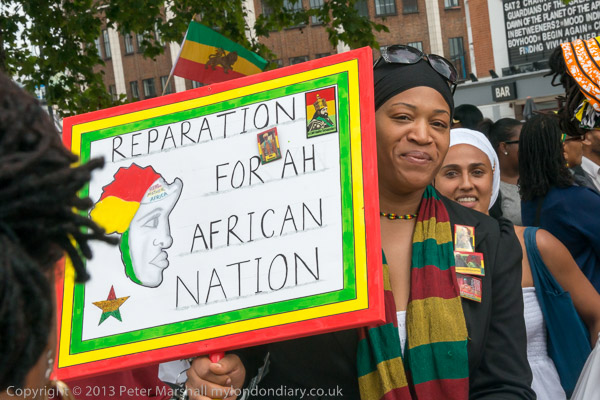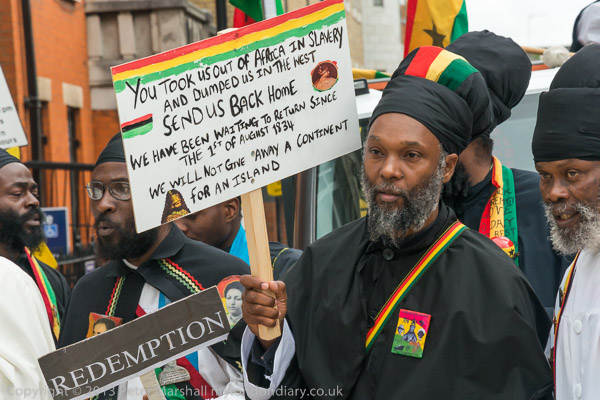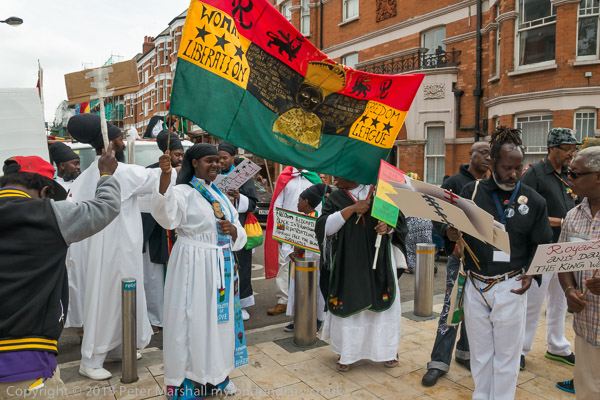
After working and studying in London, Marcus Garvey returned to his native Jamaica in 1914 and on 1 August founded the Universal Negro Improvement Association (UNIA) to unite all of Africa and its diaspora into “one grand racial hierarchy.” The movement flourished when he took it to the USA and in 1920 claimed 4 million members. August 1 had been chosen to found the organisation as it was Emancipation Day, the anniversary of the legal ending of slavery in the British Empire in 1834.

The slave trade had been banned in 1807, and two hundred years later I had photographed events commemorating this in Central London and in Kennington, Brixton and Clapham, which I described as “the spiritual and physical home of the abolition movement.”
As I wrote then, “fortunes made from slavery helped to build many of the institutions from which we still benefit, including our many of our great galleries and museums. Slavery founded many of our banks and breweries and other great industries, and made Britain a wealthy nation.” All of us in the UK – black as well as white – benefit from this legacy, even if, as I also pointed out, “the same wealthy elite that treated Africans so callously exploited the poor in Britain. My ancestors were thrown off their land and probably some were imprisoned for their religious beliefs by these same elites.”

The bottle is of African Palm Juice, traditional for libations in many West African ceremonies
Since at least 1999, some African organisations and countries have been pressing for compensation to the descendants of those who were enslaved by the Atlantic Slave Trade, and the Marcus Garvey anniversary event in Brixton was a gathering before a march to Parliament to present a claim for reparations.

Among those at the event were a number of people who recognised me and greeted me, and a few who wanted to know why I was taking photographs – who I was working for. As usual I answered them politely, telling them I was a freelance photographer with a particular interest in London and its communities and in protests, and that my work went into agencies and could be used in newspapers, magazines and books, and almost all seemed satisfied. Except one man, in pseudo-military garb, who felt that my presence as a white man at this event wasn’t appropriate, and threatened that some people present might violently object. But others were much more welcoming and clearly happy to be photographed, some asking me to take their pictures.

I’d hoped to photograph the start of the march but things seemed to be running rather late and I had to leave to cover another event while the speeches were continuing.
Pictures and Text: Rastafari demand reparations for slave trade
______________________________________________________
My London Diary : Buildings of London : River Lea/Lee Valley : London’s Industrial Heritage
All photographs on this and my other sites, unless otherwise stated, are taken by and copyright of Peter Marshall, and are available for reproduction or can be bought as prints.
To order prints or reproduce images
________________________________________________________